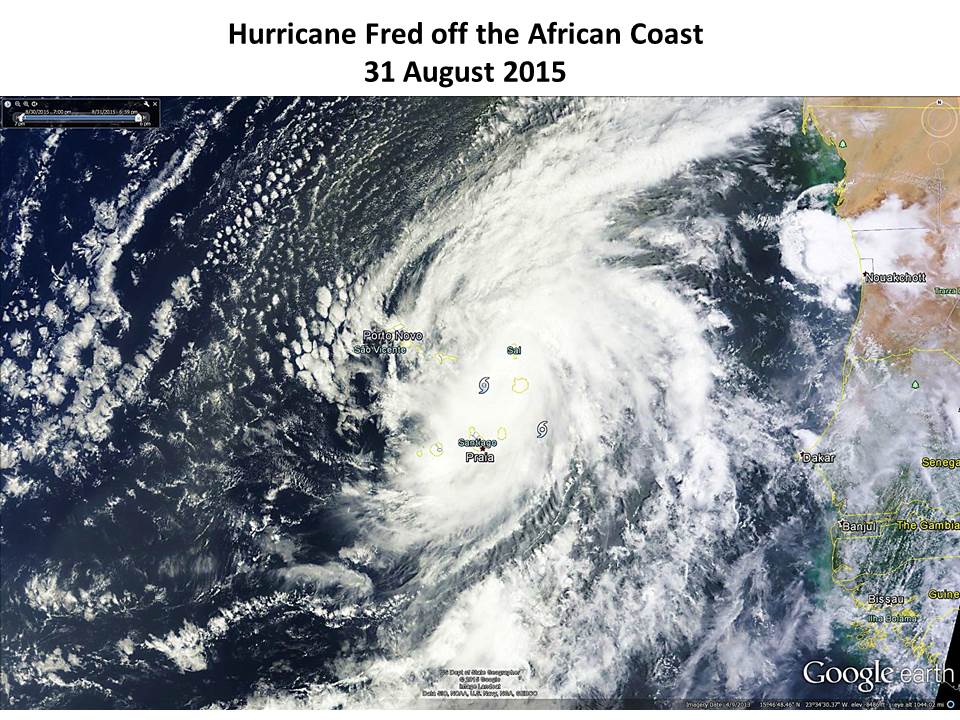Newly formed Hurricane Fred over the Cape Verde Islands is, as far as I can tell, the farthest east that a hurricane has formed in the Atlantic, based upon modern historical records. It appears to be only the third hurricane to directly impact the Islands.
This color satellite view from the NASA MODIS imager shows an event we might not see again in our lifetimes (click for full size):
Fred is traveling northwestward and is not expected to impact North America, and should slowly weaken in the next few days as it encounters colder waters.

 Home/Blog
Home/Blog




